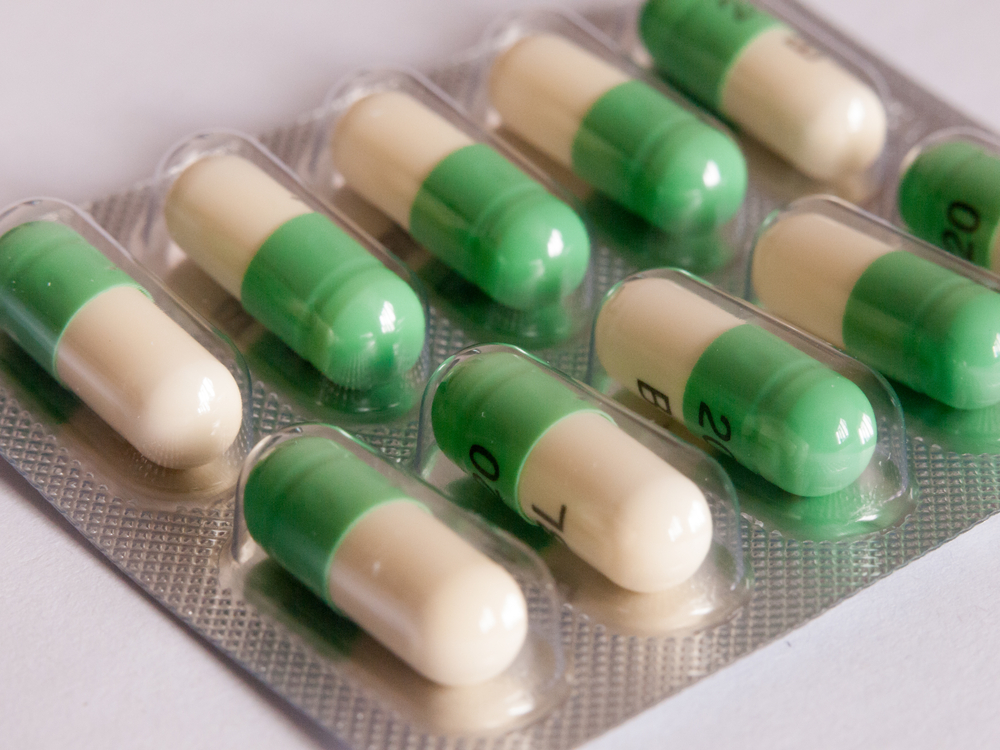
Clinical depression often starts for the first time during adolescence and rates of the condition are increasing in young people. It is easy to trivialise these experiences by remembering the moodiness and difficulties of our own teenage years, but clinical depression in this age group is a serious disorder. Suicide is a leading cause of death in young people and depression during this critical time can have life-long consequences; from impairing education and job prospects, to affecting the development of peer friendships and support (Ryan 2005).
It is therefore really important that clinical depression is effectively treated in adolescents, yet research and development of treatments for this age group have been relatively neglected. Instead, treatments designed for adults are often adapted without consideration or understanding of the specific biological, psychological and social drivers in adolescence.
The number of young people being prescribed antidepressant drug treatments is also increasing (Jack et al 2020). However, there have been concerns that antidepressants and other types of treatment, such as psychological therapy, may not work very well in young people when compared to adults (see for example this recent blog by David Halford). It is also difficult to consider effects across these different types of treatment since there are often differences in how they are researched, reported and applied in the clinic.
A recent review published by Zhou et al., (2020) attempted to compare different antidepressant drug treatments, psychotherapies and their combination in young people (<18 years old) within the same framework using a network meta-analytical approach. The meta-analysis and systematic review compared treatments from 71 trials in terms of efficacy and acceptability.

Antidepressants are increasingly prescribed to young people with depression, but how well do they work in this age group and how does this compare to other treatments?
Methods
Zhou et al., (2020) performed a systematic review and network meta-analysis across trials including 9,510 children and adolescents with depressive disorders assigned to 28 different active interventions (and compared to four types of control conditions). This kind of network meta-analysis differs from standard meta-analysis by allowing comparisons between multiple treatments simultaneously in a single analysis, including between treatments that have not been directly compared in clinical trials. This is achieved by constructing a network in which direct treatment comparisons (i.e. from head to head trials) also allow indirect comparisons (i.e. across trials based on a common comparator).
Zhou et al., (2020) included trials of 16 antidepressants, seven psychotherapies, and five combinations of antidepressant and psychotherapy that have been used for the short-term treatment of children and adolescents with diagnosed depressive disorder. The analysis focused on three key areas:
- Efficacy (change in depression severity from the start of treatment on standard depression symptom scales)
- Acceptability (number of patients discontinuing treatment)
- Suicidality (reports of suicidal behaviour or ideation).
They also considered whether treatment effects were modified by clinical and demographic characteristics as well as by study design. Zhou el al (2020) further assessed risk of bias in publications and variability between and within studies.
Results
4,081 participants were randomly assigned to antidepressants, 1,575 to psychotherapy, 553 to a combination treatment, and 3,301 to a psychological control or pill placebo. The results from the three main outcomes were:
Efficacy
Of all the different treatments considered, only the selective serotonin reuptake inhibitor (SSRI) fluoxetine (standardised mean difference of -.51) and fluoxetine with the addition of CBT (standardised mean difference of -.73) were more effective than both pill placebo and psychological controls, with no difference between these conditions. Interpersonal psychotherapy, but not CBT nor psychodynamic therapy, was more effective than psychological controls, but not pill placebo.
Acceptability
In terms of treatment discontinuation, there was no difference between fluoxetine and psychological treatments, which did not differ from placebo. The tricyclic antidepressant (TCA) imipramine was associated with more dropouts than pill placebo and other medicines.
Suicidal behaviour and thoughts
There have been concerns that antidepressant medication may increase suicidal thoughts in young people with depression. There was significant evidence for this with the serotonin-noradrenaline reuptake inhibitor (SNRI) venlafaxine. However, there was no difference in suicidality between all other antidepressants, psychological and placebo treatments. It should be noted that changes in suicidal thinking and behaviour were not always measured or documented, particularly in studies involving psychological treatment, so these conclusions are preliminary.
There was evidence for publication bias in efficacy outcome in psychotherapy trials and variance between studies was relatively high across studies as a whole.
The meta-regression analysis across the network of studies did not find key differences between most clinical, demographic and study design factors. However, studies in which patients had more severe depression tended to have larger treatment effects.

Fluoxetine and fluoxetine with CBT were more effective than placebo controls in young people with depression.
Conclusions
Zhou et al., (2020) found that:
- Of all the included active interventions, only fluoxetine plus CBT and fluoxetine alone were significantly better at treating depression than pill placebo in children and adolescents with depressive disorders
- There was also a benefit of interpersonal therapy compared to psychological controls
- The effect sizes for these comparisons were in the medium to large range, though there was relatively high variability (uncertainty) and the quality of evidence was considered low.
The authors note that the benefit seen in these studies with children and adolescents was less consistent across drug and psychological treatments than that typically seen in studies in adults, where most of these treatments were effective compared to controls. This may be because of key developmental differences in biological, cognitive and social development in adolescents which are likely to modify the impact of treatment interventions. For example, some authors have suggested that the brain circuits involved in emotional regulation are continuing to develop during adolescence and may be relatively less impacted by some treatments (both psychological and pharmacological) which have been designed to help adults with depression. It is also possible that since there are far fewer treatment studies in adolescents, with generally higher levels of placebo response, that there may be insufficient statistical power to make meaningful comparisons between treatments.
This meta-analysis also confirmed that treatments were largely acceptable in terms of numbers of patients withdrawing from therapies, though imipramine fared less well in this comparison, consistent with higher levels of side effects associated with TCA treatment. In 2004, the FDA placed a black box warning on antidepressants for increased risk of suicidal thoughts and behaviour in children and adolescents. In this analysis, suicidality data on psychological and combination interventions were systematically investigated using the same approach used for medication alone. This showed that the SNRI, venlafaxine, which potentially increases levels of noradrenaline as well as serotonin in the brain had a significantly increased risk for suicidality compared to other treatments. However, suicidality was not increased with other antidepressants including the more widely studied, fluoxetine, in comparison to psychological treatments, which is reassuring given earlier concerns.

This meta-analysis confirms the efficacy of fluoxetine for the treatment of adolescent depression.
Strengths and limitations
This study represents an heroic effort to integrate evidence from psychological and pharmacological trials on the benefits and harms of different treatments for adolescent depression. This kind of evidence synthesis can help inform choices between different treatment options and their combination. However, this integration is both a strength and a potential weakness in the meta-analysis and review since trials with varying interventions have tended to be performed in quite different ways making statistical comparison difficult. For example, there was a relative lack of blinding in psychological treatment trials (so patients and clinicians knew which treatment had been received). Indeed, the higher level of regulation for clinical trials involving drug treatments was associated with a more detailed level of reporting. In contrast, there was some evidence of reporting bias for psychological treatment research and information on suicidality was often absent. However, it must also be acknowledged that antidepressant trials that compare drugs with inert placebo may also be difficult to blind successfully.
Network meta-analysis involves a number of important assumptions, for example that differing trial characteristics are evenly distributed across the sampled studies. However, this is not a given, and we often have more faith in studies in which different modalities of treatment are compared directly. In this regard, it is reassuring that one of the largest publicly funded trials (the Treatment of Adolescent Depression Study – TADS) reported a similar pattern with 61% of teenagers improving with 12 weeks of fluoxetine treatment compared to 35% on placebo and 43% with psychological treatment (March et al., 2004). In this trial, however, there was an added benefit of combined treatment, with a response rate of 71% to fluoxetine with CBT. This suggests that more primary research is needed to evaluate combination treatments and the best way to join up these different treatment options.
This meta-analysis focused on relatively short-term efficacy after a median of 8 weeks of treatment. However, it is important to consider longer term treatment effects and data on relapse of depression as well. Although psychological treatment action did not emerge strongly in these comparisons, psychological interventions may well be more effective when considering longer term effects and effect on relapse.
Finally, meta analyses are only as good as the data they contain and we need more studies and more statistical power to address some of these key questions. Standard clinical depressive rating scales (reported by most studies) capture only a relatively narrow range of symptoms and a focus on other outcome measures of relevance to patients is badly needed. Additionally, more head to head comparisons of psychotherapies and antidepressant treatments are required and it will be very important to identify treatment predictors to one modality or another.

What outcomes matter most to young people with depression and their families?
Implications for practice
Fluoxetine is an effective treatment for adolescents with depression, compared to other antidepressants and psychological treatments. At a group level this treatment was acceptable and did not appear to increase suicidal ideation/behaviour. However, in the treatment of individual patients, the authors highlight that it is crucial to consider and monitor such effects with both antidepressant and psychotherapy treatments. Given that antidepressants are increasingly given to young people with depression, and may represent one of the most effective treatments at least in the short term, more research is needed to understand mechanisms and identify neurobiological and psychological targets for future treatment development.

More research is needed on treatments for depression in young people with a focus on understanding how treatments work in this age group.
Antidepressants for young people with depression and anxiety – our #ActiveIngredientsMH review
Our active ingredient project commissioned by the Wellcome Trust aimed to identify and review the effects of key interventions or components of interventions that are effective for young people with depression and anxiety. The meta-analysis by Zhou et al (2020) suggests that antidepressants are important in the range of treatments available for the management of depression in young people. Our workshops with young people have shown that the use of antidepressant medication is associated with stigma and anxiety, but against this one must pit the acute risks and long-term consequences of inadequately-treated depression. The potential benefits and risks of antidepressant medication is therefore really important to consider.
In our review, we systematically searched the literature, asking four main questions.
- Do SSRI antidepressants work in young people with depression and anxiety?
- For whom and under what contexts do they work best?
- How do they work?
- What are the risks?
- We found, similar to the meta-analysis by Zhou et al (2020), that SSRIs have therapeutic efficacy in depression and also anxiety in young people, though they do not work for everyone and more treatment options are needed.
- There is limited systematic evidence for whom they work best; this is a really important question to address because it could help target antidepressant treatment more effectively.
- There was little work on mechanisms of antidepressant action in young people which is critical to improve treatment development in this age group.
- There was emerging evidence that SSRIs may affect brain circuits important in emotional response and regulation which over time leads to improved mood and alleviation of the symptoms of depression.
- As in the Zhou et al.,(2020) review we did not find evidence for increased suicide during SSRI treatment in young people. Typical side effects (as in adults) do occur but these tend to lessen with time.
- However, the long-term effects of taking antidepressants during the teenage years are not well understood.
- On one hand we know that untreated depression can have long-lasting deleterious effects which extend into adulthood.
- On the other, we need to know the risks and effects of SSRI treatment during a time when the brain is undergoing critical developmental changes; so the potential risks and benefits of drug treatment can be evaluated and individuals can make more informed choices between different therapeutic options.

SSRIs are widely used in the treatment of young people with depression and anxiety but we need to understand more about how, when and for whom they work best.
We involved young people with lived experience of depression and/or anxiety in this review process, from setting the research questions, to discussing the findings and gaps in findings and working together on the best way to disseminate what we found. This was an important process for us; it gave us insight into the experience of depression and anxiety as a young person and what it feels like to take antidepressants. It revealed some fundamental gaps in our research knowledge particularly about how antidepressants affect key areas of concern for young people, e.g. how they affect school life, how cognitive function may be affected, how diversity may affect depression and treatment; how treatments may be affected by alcohol and other drug use. The lack of knowledge about how and when to come off antidepressants in young people was a particular area of concern as well as what happens during the withdrawal process itself. At the same time, many of the group felt that antidepressants had helped them, in many ways consistent with the research mechanisms highlighted in our review. The group also wanted to reduce the stigma associated with depression and its treatment and help to relieve some fears about their use. We are very grateful to the youth advisors and the McPin Foundation and Neurosec team for helping us and contributing so much to this project.
Statement of interests
I (Catherine Harmer) work in the same department as one of the senior authors (Andrea Cipriani) who published meta-analysis by Zhou et al (2020). In line with my research focus, I have received consultancy fees and research funding to the University of Oxford from pharmaceutical companies focused on development of novel treatments for depression in adults (clinical research).
Links
Primary paper
Zhou X, Teng T, Zhang Y, Del Giovane C, Furukawa TA, Weisz JR, Li X, Cuijpers P, Coghill D, Xiang Y, Hetrick SE, Leucht S, Qin M, Barth J, Ravindran AV, Yang L, Curry J, Fan L, Silva SG, Cipriani A, Xie P. Comparative efficacy and acceptability of antidepressants, psychotherapies, and their combination for acute treatment of children and adolescents with depressive disorder: a systematic review and network meta-analysis. Lancet Psychiatry. 2020 Jul;7(7):581-601
Other references
Jack RH, Hollis C, Coupland C, Morriss R, Knaggs RD, Butler D, Cipriani A, Cortese S, Hippisley-Cox J Incidence and prevalence of primary care antidepressant prescribing in children and young people in England, 1998-2017: A population-based cohort study. PLoS Med. 2020 Jul 22;17(7):e1003215.
March J, Silva S, Petrycki S, Curry J, Wells K, Fairbank J, Burns B, Domino M, McNulty S, Vitiello B, Severe J; Fluoxetine, cognitive-behavioral therapy, and their combination for adolescents with depression: Treatment for Adolescents With Depression Study (TADS) randomized controlled trial. JAMA. 2004 Aug 18;292(7):807-20. doi: 10.1001/jama.292.7.807
Ryan ND. Treatment of depression in children and adolescents. Lancet 2005; 366: 933–40.
Photo credits
- Photo by Hendrik Kespohl on Unsplash
- Photo by Chi Lok TSANG on Unsplash

It’s a pity that Andrea does not turn his attention to clinically relevant reviews such as outcomes at 1 year or longer from use of psychotropics. It would be a much sparser review but that would be a conclusion in itself. Statins are used on the basic of placebo-controlled studies with follow ups of 5 years. It is unjustified to extrapolate from weeks-long trials to months- or years-long treatment. This extrapolation did not work for benzodiazepines and it requires a leap of faith to do so for other drug classes.